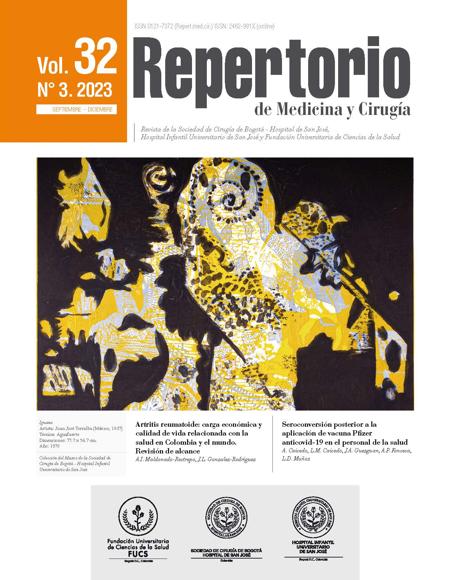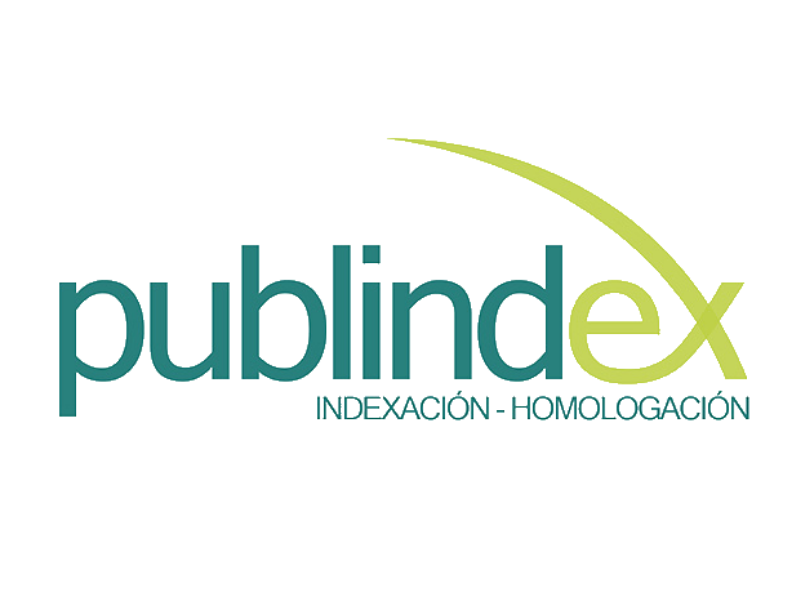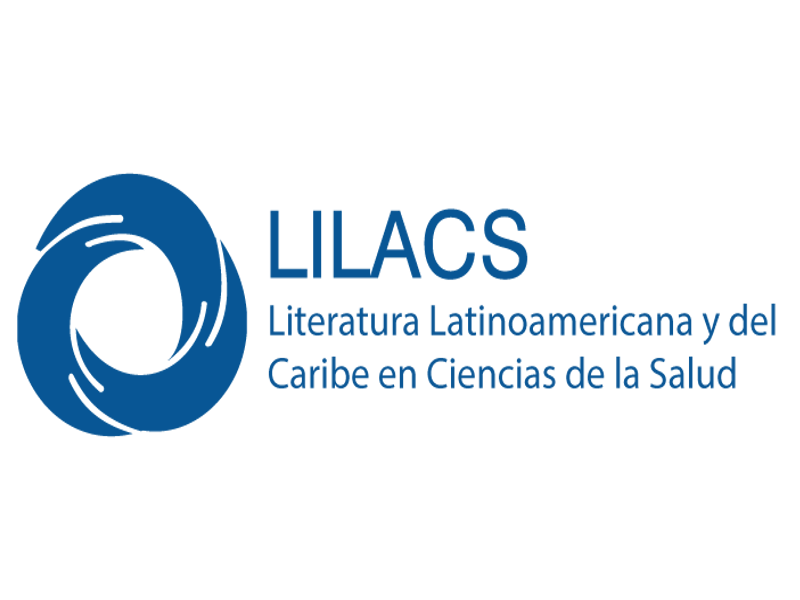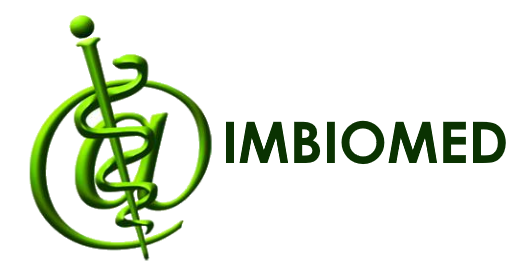Leptina, obesidad y enfermedades cardiovasculares
Leptin, obesity and cardiovascular diseases
Cómo citar
Descargar cita
Esta obra está bajo una licencia internacional Creative Commons Atribución-NoComercial-CompartirIgual 4.0.
Mostrar biografía de los autores
La obesidad está asociada con el síndrome metabólico, la hipertensión, la aterosclerosis y las enfermedades del corazón. El tejido adiposo funciona como un órgano endocrino al secretar múltiples proteínas inmunomoduladoras conocidas como adipocinas, que pueden actuar en forma directa sobre órganos cercanos o remotos. La búsqueda de las funciones de las diferentes adipocinas ha permitido establecer la relación entre obesidad y enfermedades cardiovasculares. La primera conduce a mayor expresión de algunas adipocinas proinflamatorias y disminución de otras antiinflamatorias, dando como resultado el desarrollo de un estado inflamatorio crónico de bajo grado. Algunas adipocinas disminuyen su expresión en sujetos obesos. Sin embargo, la leptina la aumenta en obesidad y promueve complicaciones relacionadas con esta. Estudios clínicos y experimentales indican que la leptina contribuye al desarrollo de cardiopatía isquémica y ejerce acciones perniciosas en las enfermedades cardiovasculares relacionadas con la obesidad.
Visitas del artículo 1947 | Visitas PDF 1934
Descargas
- Wang Q, Wu H. T Cells in Adipose Tissue: Critical Players in Immunometabolism. Front Immunol. 2018;9:2509. doi: 10.3389/fimmu.2018.02509. DOI: https://doi.org/10.3389/fimmu.2018.02509
- Ryan VH, German AJ, Wood IS, Hunter L, Morris P, Trayhurn P. Adipokine expression and secretion by canine adipocytes: stimulation of inflammatory adipokine production by LPS and TNFalpha. Pflugers Arch. 2010;460(3):603-16. doi: 10.1007/s00424-010-0845-x. DOI: https://doi.org/10.1007/s00424-010-0845-x
- Kang YM, Kim F, Lee WJ. Role of NO/VASP Signaling Pathway against Obesity-Related Inflammation and Insulin Resistance. Diabetes Metab J. 2017;41(2):89-95. doi: 10.4093/dmj.2017.41.2.89. DOI: https://doi.org/10.4093/dmj.2017.41.2.89
- Blüher M. Adipose tissue inflammation: a cause or consequence of obesity-related insulin resistance? Clin Sci (Lond). 2016;130(18):1603-14. doi: 10.1042/CS20160005. DOI: https://doi.org/10.1042/CS20160005
- Ruggiero AD, Key CC, Kavanagh K. Adipose Tissue Macrophage Polarization in Healthy and Unhealthy Obesity. Front Nutr. 2021;8:625331. doi: 10.3389/fnut.2021.625331. DOI: https://doi.org/10.3389/fnut.2021.625331
- Khosravi F, Ahmadvand N, Bellusci S, Sauer H. The Multifunctional Contribution of FGF Signaling to Cardiac Development, Homeostasis, Disease and Repair. Front Cell Dev Biol. 2021;9:672935. doi: 10.3389/fcell.2021.672935. DOI: https://doi.org/10.3389/fcell.2021.672935
- Dhandapany PS, Kang S, Kashyap DK, Rajagopal R, Sundaresan NR, Singh R, Thangaraj K, Jayaprakash S, Manjunath CN, Shenthar J, Lebeche D. Adiponectin receptor 1 variants contribute to hypertrophic cardiomyopathy that can be reversed by rapamycin. Sci Adv. 2021;7(2):eabb3991. doi: 10.1126/sciadv.abb3991. DOI: https://doi.org/10.1126/sciadv.abb3991
- Sun K, Kusminski CM, Scherer PE. Adipose tissue remodeling and obesity. J Clin Invest. 2011;121(6):2094-101. doi: 10.1172/JCI45887. DOI: https://doi.org/10.1172/JCI45887
- Wu C, Yu P, Sun R. Adipose tissue and age‑dependent insulin resistance: New insights into WAT browning (Review). Int J Mol Med. 2021;47(5):71. doi: 10.3892/ijmm.2021.4904. DOI: https://doi.org/10.3892/ijmm.2021.4904
- Lindhorst A, Raulien N, Wieghofer P, Eilers J, Rossi FMV, Bechmann I, Gericke M. Adipocyte death triggers a pro-inflammatory response and induces metabolic activation of resident macrophages. Cell Death Dis. 2021;12(6):579. doi: 10.1038/s41419-021-03872-9. DOI: https://doi.org/10.1038/s41419-021-03872-9
- Strissel KJ, Stancheva Z, Miyoshi H, Perfield JW 2nd, DeFuria J, Jick Z, Greenberg AS, Obin MS. Adipocyte death, adipose tissue remodeling, and obesity complications. Diabetes. 2007;56(12):2910-8. doi: 10.2337/db07-0767. DOI: https://doi.org/10.2337/db07-0767
- Mitchell CS, Premaratna SD, Bennett G, Lambrou M, Stahl LA, Jois M, Barber E, Antoniadis CP, Woods SC, Cameron-Smith D, Weisinger RS, Begg DP. Inhibition of the Renin-Angiotensin System Reduces Gene Expression of Inflammatory Mediators in Adipose Tissue Independent of Energy Balance. Front Endocrinol (Lausanne). 2021;12:682726. doi: 10.3389/fendo.2021.682726. DOI: https://doi.org/10.3389/fendo.2021.682726
- Chen LW, Chen PH, Yen JH. Inhibiting adipose tissue M1 cytokine expression decreases DPP4 activity and insulin resistance in a type 2 diabetes mellitus mouse model. PLoS One. 2021;16(5):e0252153. doi: 10.1371/journal.pone.0252153. DOI: https://doi.org/10.1371/journal.pone.0252153
- Geng Y, Hardie J, Landis RF, Mas-Rosario JA, Chattopadhyay AN, Keshri P, Sun J, Rizzo EM, Gopalakrishnan S, Farkas ME, Rotello VM. High-content and high-throughput identification of macrophage polarization phenotypes. Chem Sci. 2020;11(31):8231-8239. doi: 10.1039/d0sc02792h. DOI: https://doi.org/10.1039/D0SC02792H
- McNelis JC, Olefsky JM. Macrophages, immunity, and metabolic disease. Immunity. 2014;41(1):36-48. doi: 10.1016/j.immuni.2014.05.010. DOI: https://doi.org/10.1016/j.immuni.2014.05.010
- Arderiu G, Lambert C, Ballesta C, Moscatiello F, Vilahur G, Badimon L. Cardiovascular Risk Factors and Differential Transcriptomic Profile of the Subcutaneous and Visceral Adipose Tissue and Their Resident Stem Cells. Cells. 2020;9(10):2235. doi: 10.3390/cells9102235. DOI: https://doi.org/10.3390/cells9102235
- Cai R, Hao Y, Liu YY, Huang L, Yao Y, Zhou MS. Tumor Necrosis Factor Alpha Deficiency Improves Endothelial Function and Cardiovascular Injury in Deoxycorticosterone Acetate/Salt-Hypertensive Mice. Biomed Res Int. 2020;2020:3921074. doi: 10.1155/2020/3921074. DOI: https://doi.org/10.1155/2020/3921074
- Boly CA, Venhuizen M, Dekker NAM, Vonk ABA, Boer C, van den Brom CE. Comparison of Microcirculatory Perfusion in Obese and Non-Obese Patients Undergoing Cardiac Surgery with Cardiopulmonary Bypass. J Clin Med. 2021;10(3):469. doi: 10.3390/jcm10030469. DOI: https://doi.org/10.3390/jcm10030469
- Cifarelli V, Beeman SC, Smith GI, Yoshino J, Morozov D, Beals JW, Kayser BD, Watrous JD, Jain M, Patterson BW, Klein S. Decreased adipose tissue oxygenation associates with insulin resistance in individuals with obesity. J Clin Invest. 2020;130(12):6688-6699. doi: 10.1172/JCI141828. DOI: https://doi.org/10.1172/JCI141828
- Van Hulten V, van Meijel RLJ, Goossens GH. The impact of hypoxia exposure on glucose homeostasis in metabolically compromised humans: A systematic review. Rev Endocr Metab Disord. 2021;22(2):471-483. doi: 10.1007/s11154-021-09654-0. DOI: https://doi.org/10.1007/s11154-021-09654-0
- Nishimura S, Manabe I, Nagasaki M, Seo K, Yamashita H, Hosoya Y, Ohsugi M, Tobe K, Kadowaki T, Nagai R, Sugiura S. In vivo imaging in mice reveals local cell dynamics and inflammation in obese adipose tissue. J Clin Invest. 2008;118(2):710-21. doi: 10.1172/JCI33328. DOI: https://doi.org/10.1172/JCI33328
- Boa BCS, Yudkin JS, van Hinsbergh VWM, Bouskela E, Eringa EC. Exercise effects on perivascular adipose tissue: endocrine and paracrine determinants of vascular function. Br J Pharmacol. 2017;174(20):3466-3481. doi: 10.1111/bph.13732. DOI: https://doi.org/10.1111/bph.13732
- Szasz T, Webb RC. Perivascular adipose tissue: more than just structural support. Clin Sci (Lond). 2012;122(1):1-12. doi: 10.1042/CS20110151. DOI: https://doi.org/10.1042/CS20110151
- Man AWC, Zhou Y, Xia N, Li H. Perivascular Adipose Tissue as a Target for Antioxidant Therapy for Cardiovascular Complications. Antioxidants (Basel). 2020;9(7):574. doi: 10.3390/antiox9070574. DOI: https://doi.org/10.3390/antiox9070574
- Gao YJ, Zeng ZH, Teoh K, Sharma AM, Abouzahr L, Cybulsky I, Lamy A, Semelhago L, Lee RM. Perivascular adipose tissue modulates vascular function in the human internal thoracic artery. J Thorac Cardiovasc Surg. 2005;130(4):1130-6. doi: 10.1016/j.jtcvs.2005.05.028. DOI: https://doi.org/10.1016/j.jtcvs.2005.05.028
- Riddle MA, Hughes JM, Walker BR. Role of caveolin-1 in endothelial BKCa channel regulation of vasoreactivity. Am J Physiol Cell Physiol. 2011;301(6):C1404-14. doi: 10.1152/ajpcell.00013.2011. DOI: https://doi.org/10.1152/ajpcell.00013.2011
- Aghamohammadzadeh R, Greenstein AS, Yadav R, Jeziorska M, Hama S, Soltani F, Pemberton PW, Ammori B, Malik RA, Soran H, Heagerty AM. Effects of bariatric surgery on human small artery function: evidence for reduction in perivascular adipocyte inflammation, and the restoration of normal anticontractile activity despite persistent obesity. J Am Coll Cardiol. 2013;62(2):128-135. doi: 10.1016/j.jacc.2013.04.027. DOI: https://doi.org/10.1016/S0140-6736(13)60458-4
- Chang L, Garcia-Barrio MT, Chen YE. Perivascular Adipose Tissue Regulates Vascular Function by Targeting Vascular Smooth Muscle Cells. Arterioscler Thromb Vasc Biol. 2020;40(5):1094-1109. doi: 10.1161/ATVBAHA.120.312464. DOI: https://doi.org/10.1161/ATVBAHA.120.312464
- Wang P, Xu TY, Guan YF, Su DF, Fan GR, Miao CY. Perivascular adipose tissue-derived visfatin is a vascular smooth muscle cell growth factor: role of nicotinamide mononucleotide. Cardiovasc Res. 2009;81(2):370-80. doi: 10.1093/cvr/cvn288. DOI: https://doi.org/10.1093/cvr/cvn288
- Rios FJ, Moustaïd-Moussa N, Martins JO. Interplay between Hormones, the Immune System, and Metabolic Disorders. Mediators Inflamm. 2018;2018:8654212. doi: 10.1155/2018/8654212. DOI: https://doi.org/10.1155/2018/8654212
- McPhee JB, Schertzer JD. Immunometabolism of obesity and diabetes: microbiota link compartmentalized immunity in the gut to metabolic tissue inflammation. Clin Sci (Lond). 2015;129(12):1083-96. doi: 10.1042/CS20150431 DOI: https://doi.org/10.1042/CS20150431
- Tamakoshi K, Yatsuya H, Kondo T, Ishikawa M, Zhang H, Murata C, Otsuka R, Mabuchi T, Hori Y, Zhu S, Yoshida T, Toyoshima H. Long-term body weight variability is associated with elevated C-reactive protein independent of current body mass index among Japanese men. Int J Obes Relat Metab Disord. 2003;27(9):1059-65. doi: 10.1038/sj.ijo.0802386. DOI: https://doi.org/10.1038/sj.ijo.0802386
- Néri AK, da S Junior GB, Meneses GC, Martins AM, F Daher E, da C Lino DO, Silva RP, Psf Nunes M, Alencar RL, Rodrigues MS, Saraiva IP. Cardiovascular risk assessment and association with novel biomarkers in patients with Type 2 diabetes mellitus. Biomark Med. 2021;15(8):561-576. doi: 10.2217/bmm-2020-0611. DOI: https://doi.org/10.2217/bmm-2020-0611
- Esposito K, Pontillo A, Di Palo C, Giugliano G, Masella M, Marfella R, Giugliano D. Effect of weight loss and lifestyle changes on vascular inflammatory markers in obese women: a randomized trial. JAMA. 2003;289(14):1799-804. doi: 10.1001/jama.289.14.1799. DOI: https://doi.org/10.1001/jama.289.14.1799
- Pan X, Kaminga AC, Wen SW, Liu A. Chemokines in Prediabetes and Type 2 Diabetes: A Meta-Analysis. Front Immunol. 2021;12:622438. doi: 10.3389/fimmu.2021.622438. DOI: https://doi.org/10.3389/fimmu.2021.622438
- Zhang M, Li F, Ma XF, Li WT, Jiang RR, Han RL, Li GX, Wang YB, Li ZY, Tian YD, Kang XT, Sun GR. Identification of differentially expressed genes and pathways between intramuscular and abdominal fat-derived preadipocyte differentiation of chickens in vitro. BMC Genomics. 2019;20(1):743. doi: 10.1186/s12864-019-6116-0. DOI: https://doi.org/10.1186/s12864-019-6116-0
- Cheng CK, Bakar HA, Gollasch M, Huang Y. Perivascular Adipose Tissue: the Sixth Man of the Cardiovascular System. Cardiovasc Drugs Ther. 2018;32(5):481-502. doi: 10.1007/s10557-018-6820-z. DOI: https://doi.org/10.1007/s10557-018-6820-z
- Ahmed B, Si H. The Aging of Adipocytes Increases Expression of Pro-Inflammatory Cytokines Chronologically. Metabolites. 2021;11(5):292. doi: 10.3390/metabo11050292 DOI: https://doi.org/10.3390/metabo11050292
- Peek V, Neumann E, Inoue T, Koenig S, Pflieger FJ, Gerstberger R, Roth J, Matsumura K, Rummel C. Age-Dependent Changes of Adipokine and Cytokine Secretion From Rat Adipose Tissue by Endogenous and Exogenous Toll-Like Receptor Agonists. Front Immunol. 2020;11:1800. doi: 10.3389/fimmu.2020.01800. DOI: https://doi.org/10.3389/fimmu.2020.01800
- Ohashi K, Shibata R, Murohara T, Ouchi N. Role of anti-inflammatory adipokines in obesity-related diseases. Trends Endocrinol Metab. 2014;25(7):348-55. doi: 10.1016/j.tem.2014.03.009. DOI: https://doi.org/10.1016/j.tem.2014.03.009
- Ouchi N, Ohishi M, Kihara S, Funahashi T, Nakamura T, Nagaretani H, Kumada M, Ohashi K, Okamoto Y, Nishizawa H, Kishida K, Maeda N, Nagasawa A, Kobayashi H, Hiraoka H, Komai N, Kaibe M, Rakugi H, Ogihara T, Matsuzawa Y. Association of hypoadiponectinemia with impaired vasoreactivity. Hypertension. 2003;42(3):231-4. doi: 10.1161/01.HYP.0000083488.67550.B8. DOI: https://doi.org/10.1161/01.HYP.0000083488.67550.B8
- Guzik TJ, Skiba DS, Touyz RM, Harrison DG. The role of infiltrating immune cells in dysfunctional adipose tissue. Cardiovasc Res. 2017;113(9):1009-1023. doi: 10.1093/cvr/cvx108. DOI: https://doi.org/10.1093/cvr/cvx108
- Hara T, Sato A, Yamamoto C, Kaji T. Syndecan-1 downregulates syndecan-4 expression by suppressing the ERK1/2 and p38 MAPK signaling pathways in cultured vascular endothelial cells. Biochem Biophys Rep. 2021;26:101001. doi: 10.1016/j.bbrep.2021.101001. DOI: https://doi.org/10.1016/j.bbrep.2021.101001
- Obradovic M, Sudar-Milovanovic E, Soskic S, Essack M, Arya S, Stewart AJ, Gojobori T, Isenovic ER. Leptin and Obesity: Role and Clinical Implication. Front Endocrinol (Lausanne). 2021;12:585887. doi: 10.3389/fendo.2021.585887. DOI: https://doi.org/10.3389/fendo.2021.585887
- Bolze F, Morath V, Bast A, Rink N, Schlapschy M, Mocek S, Skerra A, Klingenspor M. Long-Acting PASylated Leptin Ameliorates Obesity by Promoting Satiety and Preventing Hypometabolism in Leptin-Deficient Lep(ob/ob) Mice. Endocrinology. 2016;157(1):233-44. doi: 10.1210/en.2015-1519. DOI: https://doi.org/10.1210/en.2015-1519
- Tanaka S, Isoda F, Kiuchi Y, Ikeda H, Mobbs CV, Yamakawa T. T lymphopenia in genetically obese-diabetic Wistar fatty rats: effects of body weight reduction on T cells. Metabolism. 2000;49(10):1261-6. doi: 10.1053/meta.2000.9516. DOI: https://doi.org/10.1053/meta.2000.9516
- Kiguchi N, Maeda T, Kobayashi Y, Fukazawa Y, Kishioka S. Leptin enhances CC-chemokine ligand expression in cultured murine macrophage. Biochem Biophys Res Commun. 2009;384(3):311-5. doi: 10.1016/j.bbrc.2009.04.121. DOI: https://doi.org/10.1016/j.bbrc.2009.04.121
- Ruscica M, Baragetti A, Catapano AL, Norata GD. Translating the biology of adipokines in atherosclerosis and cardiovascular diseases: Gaps and open questions. Nutr Metab Cardiovasc Dis. 2017;27(5):379-395. doi: 10.1016/j.numecd.2016.12.005. DOI: https://doi.org/10.1016/j.numecd.2016.12.005
- Matarese G. Leptin and the immune system: how nutritional status influences the immune response. Eur Cytokine Netw. 2000;11(1):7-14.
- La Cava A. Leptin in inflammation and autoimmunity. Cytokine. 2017;98:51-58. doi: 10.1016/j.cyto.2016.10.011. DOI: https://doi.org/10.1016/j.cyto.2016.10.011
- Philbrick KA, Wong CP, Branscum AJ, Turner RT, Iwaniec UT. Leptin stimulates bone formation in ob/ob mice at doses having minimal impact on energy metabolism. J Endocrinol. 2017;232(3):461-474. doi: 10.1530/JOE-16-0484. DOI: https://doi.org/10.1530/JOE-16-0484
- Wauman J, Tavernier J. Leptin receptor signaling: pathways to leptin resistance. Front Biosci (Landmark Ed). 2011;16:2771-93. doi: 10.2741/3885. DOI: https://doi.org/10.2741/3885
- Viollet B, Mounier R, Leclerc J, Yazigi A, Foretz M, Andreelli F. Targeting AMP-activated protein kinase as a novel therapeutic approach for the treatment of metabolic disorders. Diabetes Metab. 2007;33(6):395-402. doi: 10.1016/j.diabet.2007.10.004. DOI: https://doi.org/10.1016/j.diabet.2007.10.004
- Uddin S, Hussain AR, Khan OS, Al-Kuraya KS. Role of dysregulated expression of leptin and leptin receptors in colorectal carcinogenesis. Tumour Biol. 2014;35(2):871-9. doi: 10.1007/s13277-013-1166-4. DOI: https://doi.org/10.1007/s13277-013-1166-4
- Bell BB, Rahmouni K. Leptin as a Mediator of Obesity-Induced Hypertension. Curr Obes Rep. 2016;5(4):397-404. doi: 10.1007/s13679-016-0231-x. DOI: https://doi.org/10.1007/s13679-016-0231-x
- Shin HS, Shin HH, Shudo Y. Current Status and Limitations of Myocardial Infarction Large Animal Models in Cardiovascular Translational Research. Front Bioeng Biotechnol. 2021;9:673683. doi: 10.3389/fbioe.2021.673683. DOI: https://doi.org/10.3389/fbioe.2021.673683
- Raman P, Khanal S. Leptin in Atherosclerosis: Focus on Macrophages, Endothelial and Smooth Muscle Cells. Int J Mol Sci. 2021;22(11):5446. doi: 10.3390/ijms22115446. DOI: https://doi.org/10.3390/ijms22115446
- Xie D, Bollag WB. Obesity, hypertension and aldosterone: is leptin the link? J Endocrinol. 2016;230(1):F7-F11. doi: 10.1530/JOE-16-0160. DOI: https://doi.org/10.1530/JOE-16-0160
- Jimenez-Munoz CM, López M, Albericio F, Makowski K. Targeting Energy Expenditure-Drugs for Obesity Treatment. Pharmaceuticals (Basel). 2021;14(5):435. doi: 10.3390/ph14050435. DOI: https://doi.org/10.3390/ph14050435
- Dunn SL, Björnholm M, Bates SH, Chen Z, Seifert M, Myers MG Jr. Feedback inhibition of leptin receptor/Jak2 signaling via Tyr1138 of the leptin receptor and suppressor of cytokine signaling 3. Mol Endocrinol. 2005;19(4):925-38. doi: 10.1210/me.2004-0353 DOI: https://doi.org/10.1210/me.2004-0353
- Mori H, Hanada R, Hanada T, Aki D, Mashima R, Nishinakamura H, Torisu T, Chien KR, Yasukawa H, Yoshimura A. Socs3 deficiency in the brain elevates leptin sensitivity and confers resistance to diet-induced obesity. Nat Med. 2004;10(7):739-43. doi: 10.1038/nm1071. DOI: https://doi.org/10.1038/nm1071
- Mao S, Fang L, Liu F, Jiang S, Wu L, Zhang J. Leptin and chronic kidney diseases. J Recept Signal Transduct Res. 2018;38(2):89-94. doi: 10.1080/10799893.2018.1431278. DOI: https://doi.org/10.1080/10799893.2018.1431278
- Hakim F, Wang Y, Carreras A, Hirotsu C, Zhang J, Peris E, Gozal D. Chronic sleep fragmentation during the sleep period induces hypothalamic endoplasmic reticulum stress and PTP1b-mediated leptin resistance in male mice. Sleep. 2015;38(1):31-40. doi: 10.5665/sleep.4320. DOI: https://doi.org/10.5665/sleep.4320
- Hubert A, Bochenek ML, Schütz E, Gogiraju R, Münzel T, Schäfer K. Selective Deletion of Leptin Signaling in Endothelial Cells Enhances Neointima Formation and Phenocopies the Vascular Effects of Diet-Induced Obesity in Mice. Arterioscler Thromb Vasc Biol. 2017;37(9):1683-1697. doi: 10.1161/ATVBAHA.117.309798. DOI: https://doi.org/10.1161/ATVBAHA.117.309798
- Anthony SR, Guarnieri AR, Gozdiff A, Helsley RN, Phillip Owens A, Tranter M. Mechanisms linking adipose tissue inflammation to cardiac hypertrophy and fibrosis. Clin Sci (Lond). 2019;133(22):2329-2344. doi: 10.1042/CS20190578. DOI: https://doi.org/10.1042/CS20190578
- Khanbabaei N, Mozafar Saadati H, Valizadeh Shahbazloo S, Hoseinpoor R, Naderi SH, Taghvamanesh R, Abolhasani S. Association of serum leptin with angiographically proven cardiovascular disease and with components of the metabolic syndrome: a cross-sectional study in East Azerbaijan. Cardiovasc Endocrinol Metab. 2020;10(1):45-50. doi: 10.1097/XCE.0000000000000227. DOI: https://doi.org/10.1097/XCE.0000000000000227
- Bouloumie A, Marumo T, Lafontan M, Busse R. Leptin induces oxidative stress in human endothelial cells. FASEB J. 1999;13(10):1231-8. DOI: https://doi.org/10.1096/fasebj.13.10.1231
- Stringa N, Brahimaj A, Zaciragic A, Dehghan A, Ikram MA, Hofman A, Muka T, Kiefte-de Jong JC, Franco OH. Relation of antioxidant capacity of diet and markers of oxidative status with C-reactive protein and adipocytokines: a prospective study. Metabolism. 2017;71:171-181. doi: 10.1016/j.metabol.2017.03.015. DOI: https://doi.org/10.1016/j.metabol.2017.03.015
- Singh P, Hoffmann M, Wolk R, Shamsuzzaman AS, Somers VK. Leptin induces C-reactive protein expression in vascular endothelial cells. Arterioscler Thromb Vasc Biol. 2007;27(9):e302-7. doi: 10.1161/ATVBAHA.107.148353. DOI: https://doi.org/10.1161/ATVBAHA.107.148353
- Paltoglou G, Schoina M, Valsamakis G, Salakos N, Avloniti A, Chatzinikolaou A, Margeli A, Skevaki C, Papagianni M, Kanaka-Gantenbein C, Papassotiriou I, Chrousos GP, Fatouros IG, Mastorakos G. Interrelations among the adipocytokines leptin and adiponectin, oxidative stress and aseptic inflammation markers in pre- and early-pubertal normal-weight and obese boys. Endocrine. 2017;55(3):925-933. doi: 10.1007/s12020-017-1227-3. DOI: https://doi.org/10.1007/s12020-017-1227-3
- Kang KW, Ok M, Lee SK. Leptin as a Key between Obesity and Cardiovascular Disease. J Obes Metab Syndr. 2020;29(4):248-259. doi: 10.7570/jomes20120. DOI: https://doi.org/10.7570/jomes20120
- Kanda T, Takahashi T, Kudo S, Takeda T, Tsugawa H, Takekoshi N. Leptin deficiency enhances myocardial necrosis and lethality in a murine model of viral myocarditis. Life Sci. 2004;75(12):1435-47. doi: 10.1016/j.lfs.2004.03.012. DOI: https://doi.org/10.1016/j.lfs.2004.03.012
- McGaffin KR, Zou B, McTiernan CF, O'Donnell CP. Leptin attenuates cardiac apoptosis after chronic ischaemic injury. Cardiovasc Res. 2009;83(2):313-24. doi: 10.1093/cvr/cvp071. DOI: https://doi.org/10.1093/cvr/cvp071
- Schiekofer S, Galasso G, Sato K, Kraus BJ, Walsh K. Impaired revascularization in a mouse model of type 2 diabetes is associated with dysregulation of a complex angiogenic-regulatory network. Arterioscler Thromb Vasc Biol. 2005;25(8):1603-9. doi: 10.1161/01.ATV.0000171994.89106.ca. DOI: https://doi.org/10.1161/01.ATV.0000171994.89106.ca
- Momin AU, Melikian N, Shah AM, Grieve DJ, Wheatcroft SB, John L, El Gamel A, Desai JB, Nelson T, Driver C, Sherwood RA, Kearney MT. Leptin is an endothelial-independent vasodilator in humans with coronary artery disease: Evidence for tissue specificity of leptin resistance. Eur Heart J. 2006;27(19):2294-9. doi: 10.1093/eurheartj/ehi831. DOI: https://doi.org/10.1093/eurheartj/ehi831
- Landecho MF, Tuero C, Valentí V, Bilbao I, de la Higuera M, Frühbeck G. Relevance of Leptin and Other Adipokines in Obesity-Associated Cardiovascular Risk. Nutrients. 2019;11(11):2664. doi: 10.3390/nu11112664. DOI: https://doi.org/10.3390/nu11112664
- Matsuda K, Teragawa H, Fukuda Y, Nakagawa K, Higashi Y, Chayama K. Leptin causes nitric-oxide independent coronary artery vasodilation in humans. Hypertens Res. 2003;26(2):147-52. doi: 10.1291/hypres.26.147. DOI: https://doi.org/10.1291/hypres.26.147
- Bassi M, Furuya WI, Zoccal DB, Menani JV, Colombari E, Hall JE, da Silva AA, do Carmo JM, Colombari DS. Control of respiratory and cardiovascular functions by leptin. Life Sci. 2015;125:25-31. doi: 10.1016/j.lfs.2015.01.019. DOI: https://doi.org/10.1016/j.lfs.2015.01.019
- Treuer AV, Gonzalez DR. Nitric oxide synthases, S-nitrosylation and cardiovascular health: from molecular mechanisms to therapeutic opportunities (review). Mol Med Rep. 2015;11(3):1555-65. doi: 10.3892/mmr.2014.2968. DOI: https://doi.org/10.3892/mmr.2014.2968
- Giardullo L, Corrado A, Maruotti N, Cici D, Mansueto N, Cantatore FP. Adipokine role in physiopathology of inflammatory and degenerative musculoskeletal diseases. Int J Immunopathol Pharmacol. 2021;35:20587384211015034. doi: 10.1177/20587384211015034. DOI: https://doi.org/10.1177/20587384211015034
- Nickola MW, Wold LE, Colligan PB, Wang GJ, Samson WK, Ren J. Leptin attenuates cardiac contraction in rat ventricular myocytes. Role of NO. Hypertension. 2000;36(4):501-5. doi: 10.1161/01.hyp.36.4.501. DOI: https://doi.org/10.1161/01.HYP.36.4.501
- Rajapurohitam V, Gan XT, Kirshenbaum LA, Karmazyn M. The obesity-associated peptide leptin induces hypertrophy in neonatal rat ventricular myocytes. Circ Res. 2003;93(4):277-9. doi: 10.1161/01.RES.0000089255.37804.72. DOI: https://doi.org/10.1161/01.RES.0000089255.37804.72
- Jeong MH, Tran NK, Kwak TH, Park BK, Lee CS, Park TS, Lee YH, Park WJ, Yang DK. β-Lapachone ameliorates lipotoxic cardiomyopathy in acyl CoA synthase transgenic mice. PLoS One. 2014;9(3):e91039. doi: 10.1371/journal.pone.0091039. DOI: https://doi.org/10.1371/journal.pone.0091039
- Ertunc ME, Hotamisligil GS. Lipid signaling and lipotoxicity in metaflammation: indications for metabolic disease pathogenesis and treatment. J Lipid Res. 2016;57(12):2099-2114. doi: 10.1194/jlr.R066514. DOI: https://doi.org/10.1194/jlr.R066514
- Schram K, De Girolamo S, Madani S, Munoz D, Thong F, Sweeney G. Leptin regulates MMP-2, TIMP-1 and collagen synthesis via p38 MAPK in HL-1 murine cardiomyocytes. Cell Mol Biol Lett. 2010;15(4):551-63. doi: 10.2478/s11658-010-0027-z. DOI: https://doi.org/10.2478/s11658-010-0027-z
- Recinella L, Orlando G, Ferrante C, Chiavaroli A, Brunetti L, Leone S. Adipokines: New Potential Therapeutic Target for Obesity and Metabolic, Rheumatic, and Cardiovascular Diseases. Front Physiol. 2020;11:578966. doi: 10.3389/fphys.2020.578966. DOI: https://doi.org/10.3389/fphys.2020.578966
- Andrienko T, Pasdois P, Rossbach A, Halestrap AP. Real-Time Fluorescence Measurements of ROS and [Ca2+] in Ischemic / Reperfused Rat Hearts: Detectable Increases Occur only after Mitochondrial Pore Opening and Are Attenuated by Ischemic Preconditioning. PLoS One. 2016;11(12):e0167300. doi: 10.1371/journal.pone.0167300. DOI: https://doi.org/10.1371/journal.pone.0167300
- Zhao X, Zhang E, Ren X, Bai X, Wang D, Bai L, Luo D, Guo Z, Wang Q, Yang J. Edaravone alleviates cell apoptosis and mitochondrial injury in ischemia-reperfusion-induced kidney injury via the JAK/STAT pathway. Biol Res. 2020;53(1):28. doi: 10.1186/s40659-020-00297-0. DOI: https://doi.org/10.1186/s40659-020-00297-0













